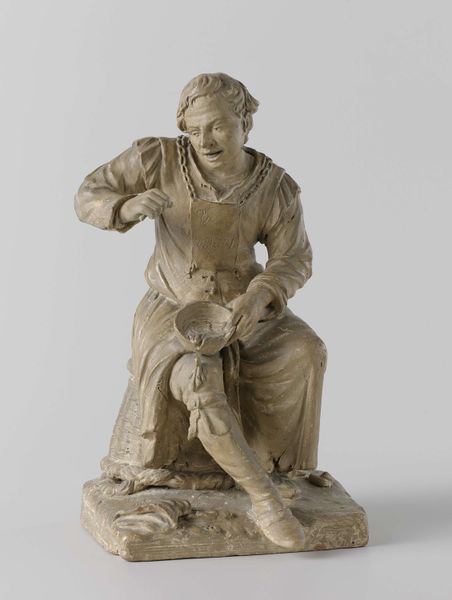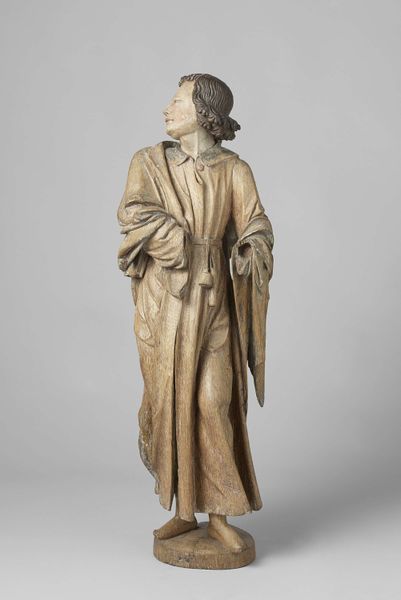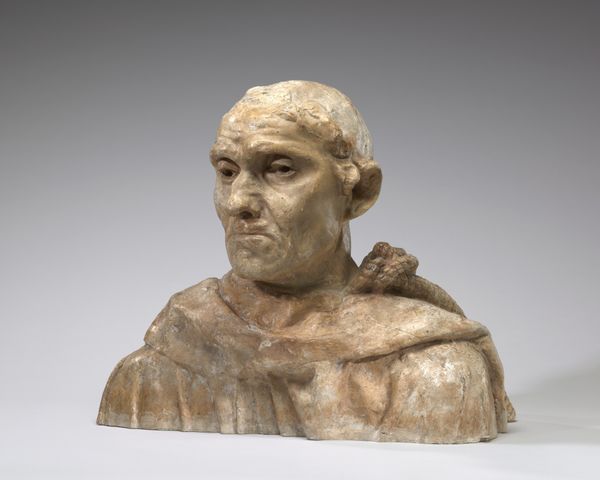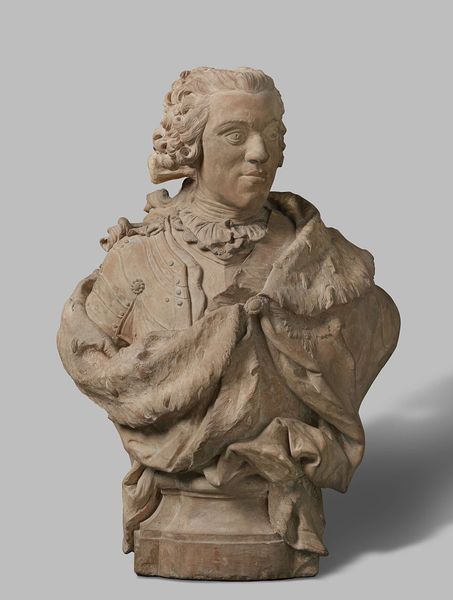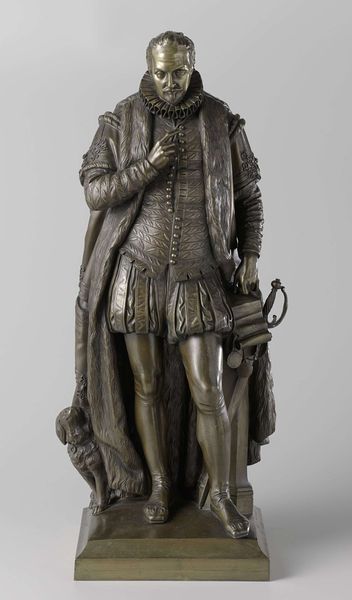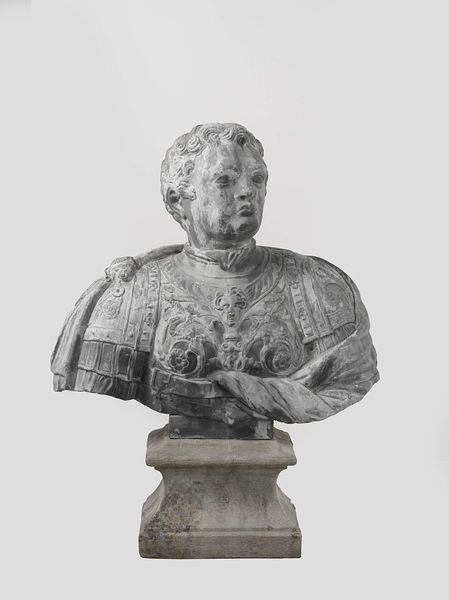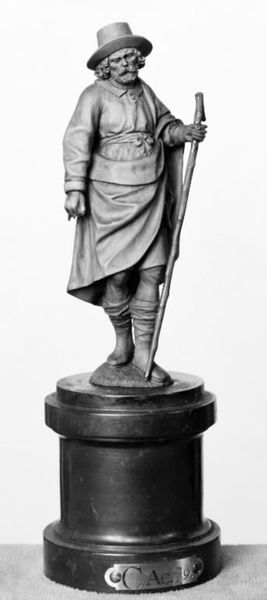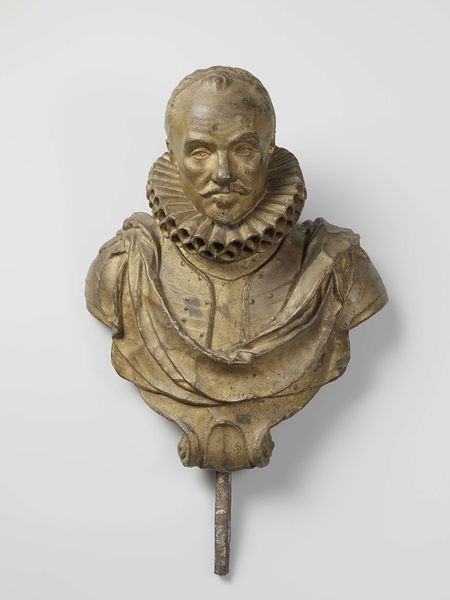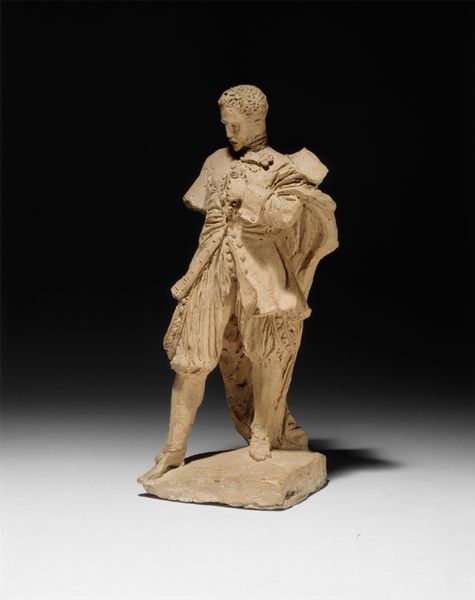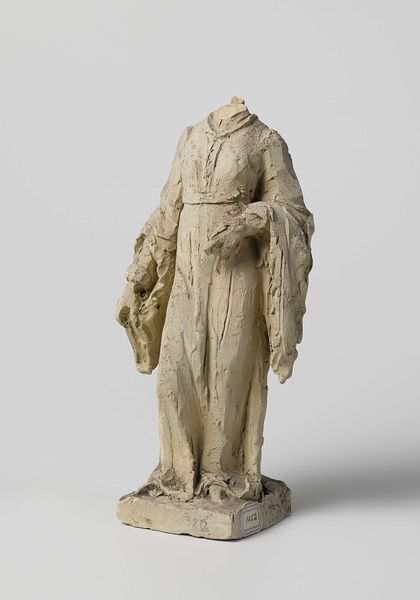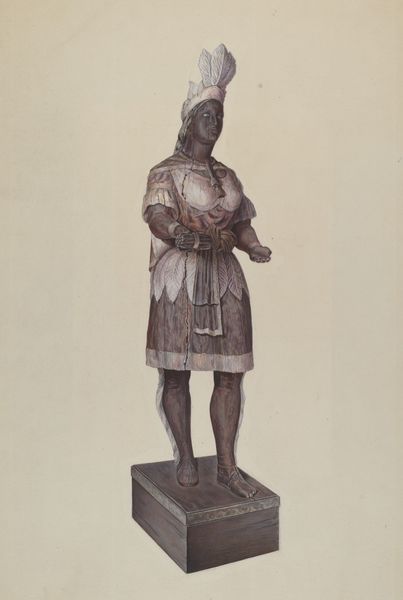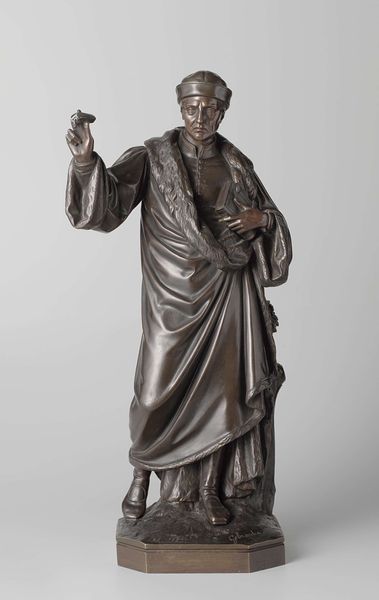
sculpture, marble
#
portrait
#
stone
#
sculpture
#
figuration
#
classicism
#
sculpture
#
history-painting
#
marble
#
rococo
Dimensions: 101.5 cm (height) (Netto)
Curator: Ah, here we are in front of Jacques Francois Joseph Saly's marble bust of King Frederik V, crafted around 1754. It's a prime example of the Rococo influence on royal portraiture, located here at the Statens Museum for Kunst. Editor: Wow, he looks so...done. You know? Like he's just sighed a huge sigh and resigned himself to being immortalized in stone. A slightly world-weary king, perhaps? Curator: Indeed, it’s quite a composed portrayal, even though he is presented in military garb with armor suggesting strength and authority. The placement of a mantle could signify nobility and power, which were frequently represented during that era. Editor: The armor feels almost satirical, like a costume he has to wear. I’m drawn to the almost…softness of the marble. Look at the detail in his wig and the gentle drape of that fabric. It's opulent and vulnerable at the same time. Is that intentional? Curator: It is a fine point of tension. It speaks to Rococo's preference for graceful, almost playful elegance, over the stricter, more austere Baroque. But there's always the need to project royal might! In the context of Danish history, Frederik V’s reign was characterized by relative peace, fostering trade and the arts, perhaps justifying the gentler touch. Editor: Maybe it's that he doesn't seem to be looking *at* us. He gazes just above, maybe to the future or past glory? The Rococo detail gives a sensitivity that transcends the propaganda machine, and even transcends the weight of the material itself. Curator: I find that interpretation insightful. This bust encapsulates a historical and artistic tension – between the soft brushstrokes of a cultural movement, and the immutable weight of kingship. Editor: Yes, that dance is what makes it live, still today. A moment of quiet captured in stone. Thanks for guiding us through. Curator: Indeed. It encourages you to question and consider both power and personality that is accessible in portraiture.
Comments
statensmuseumforkunst almost 2 years ago
⋮
The bust of King Frederik V is a typical representative portrait of a ruler. The head is held proudly erect and slightly turned. The Order of the Elephant serves to indicate the sitter’s particularly high rank, while the armour signifies his position as the official head of the military. The cut-off point of the bust is hidden by the loosely draped cloak, the edge of which reaches the bottom edge of the base. In connection with the plans to erect an equestrian statue of Frederik V in the Amalienborg Square, the donors, i.e. the Asiatic Company as headed by A.G. Moltke, approached the famous French sculptor Edme Bouchardon (1698-1762). The project aimed for maximum prestige, and the Danish patrons wanted the very best within European sculpture to further the glory of both Company and king. However, Bouchardon was compelled to refuse because he was busily at work on an equestrian statue of Louis XV in Paris; that statue is now lost. He recommended his younger colleague Saly (1717-76) instead. Saly accepted the commission, and this bust of Frederik V can be regarded as a preliminary study for the equestrian monument. After his arrival in Denmark in 1753 Saly was assigned a dwelling at the newly established Royal Danish Academy of Fine Arts at Charlottenborg. In 1754 he became the Academy’s director and introduced a number of new statutes and changes to a new charter of 1758; all these changes were inspired by the French academy. Thus, Saly very directly helped create the basis for what would be the Golden Age of Danish art.
Join the conversation
Join millions of artists and users on Artera today and experience the ultimate creative platform.
